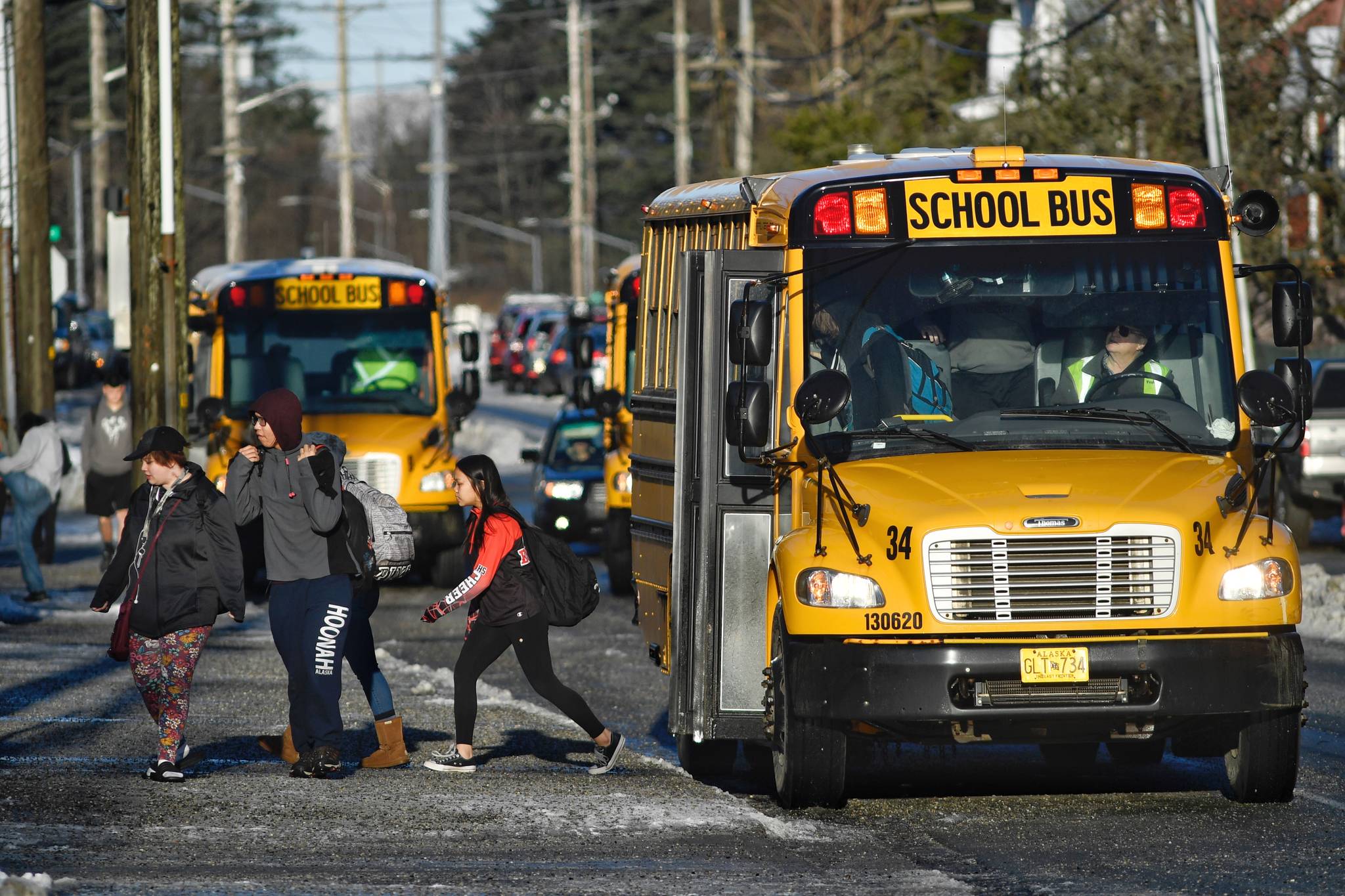Alaska’s university system isn’t the only area of education that would be impacted by Gov. Mike Dunleavy’s proposed budget cuts for the 2020 fiscal year.
Dunleavy’s budget — which proposes cutting about $1 billion dollars total in order to balance the state’s expenditures and revenue — calls for a reduction in funding of $300 million from school districts across the state, according to the Department of Education and Early Development.
That includes a cut of $10 million to the Juneau School District, which would also force a reduction in funding from the City and Borough of Juneau by another $3 million using the foundation formula, totaling an estimated $13 million less for JSD from last year’s budget.
Juneau School Board President Brian Holst said that could mean that the district would likely have to cut JSD staff, which accounts for 90 percent of the district’s total expenditures.
[Gov proposes slashing education by $20 million]
“The Juneau School District is at risk of losing around 100 or more staff if the budget passed as is,” Holst said in an interview with the Empire.
Holst told the Empire that the school board and officials are working to figure out what these cuts would mean to local schools.
“What our district would look like with $13 million less funding than anticipated has not yet been determined,” Holst said.
Each teacher — with salary and benefits — costs the school district about $100,000 a year on average, with some teachers making less than that. A loss of funding that substantial could translate into cutting 100 or more positions, which would in turn would increase classroom sizes for students, he said.
JSD this year has 350 certificated staff (counselors, teachers, special education teachers and related service providers), and about 670 full-time staff in total.
“We came into this budget cycle already knowing we’d have difficult decisions to make,” said Paul Kelly, Board of Education member. “Class sizes are already too high. We’re spread thin as it is. The governor’s proposal compounds that.”
[OMB, Senate Finance discuss university funding]
Since 2011, JSD has cut over $11 million from their budget, JSD Superintendent Bridget Weiss said in an email. Those cuts have been as the result of flat funding for the BSA (base student allocation), increased expenses and some drop in enrollments.
“To consider cutting over $10 million from our budget due to losses from both state and local contributions in one year is overwhelming,” Weiss said. “We know that since 2011 every department, school and employee group has been impacted. Class sizes have increased, our custodial and maintenance departments are operating with a much diminished staff, middle school counselors, high school administrators, nurses, district office administration, and operational support are examples of the 92 full-time positions previously eliminated.”
The JSD is currently in the process of determining its budget for the 2019-2020 school year. The deadline for the school district to submit their budget, March 29, will very likely be prior to a final decision by the legislature.
“We will be proceeding through our budget process the best way possible given so many unknowns,” Weiss said. “This loss in funding drastically reduces our capacity to support the education of our students and provide the instructional experiences necessary. We will continue to do our very best in meeting the needs of our students and families although it feels like we have one hand tied behind our back.”
Holst said he was hopeful that the legislature would work with the governor to secure a larger budget for education than the governor proposed.
“I trust that cuts like this do not reflect the attitude of Alaskans towards education and that the Legislature and the Governor will find other ways to balance the budget,” Holst said in an email.
• Contact reporter Mollie Barnes at mbarnes@juneauempire.com or 523-2228.

